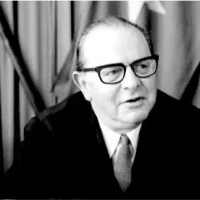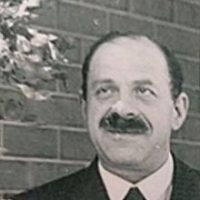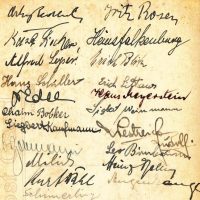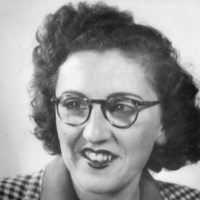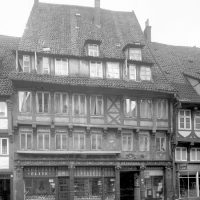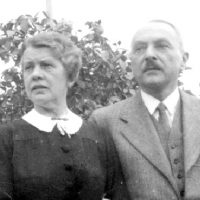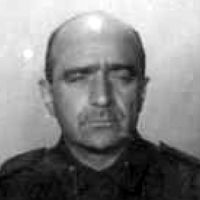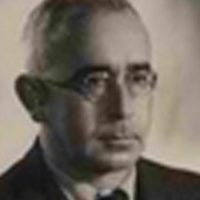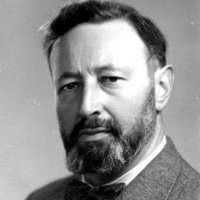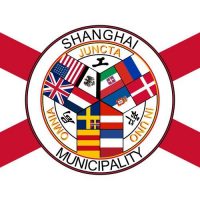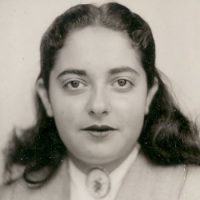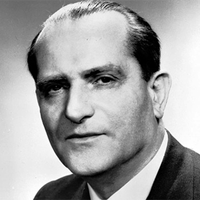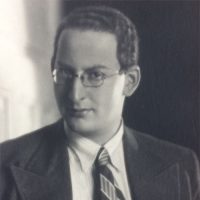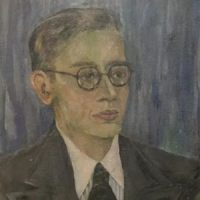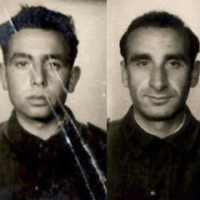Thousands escaped persecution by the Nazis with the support of Jewish aid organizations from Germany. The first ponit of contact in Great Britain for Heinz Dehn and 4,000 Jewish refugees from Germany and Austria was Kitchener Camp near Sandwich, about 25 kilometers east of Dover and close to the coast of the English Channel. Most of the men were waiting there for visas or travel opportunities to third countries such as the USA. The Kitchener Camp was intended as a transit camp for them. However, the refugees who had found shelter there were interned on May 12, 1940. As a result, Kitchener Camp was used for a few days as an internment camp for 863 people, who were transferred to Moorag Camp on the Isle of Man on May 27, 1940.
Peter Dehn, January 2024.
Who knows more about men from Kitchener Camp?
One of the men at Kitchener Camp was Heinz Dehn. Like thousands of other refugees, the father or grandfather of the initiators of this website was arrested in May 1940 and interned on the Isle of Man – despite being classified as “friendly aliens” by British tribunals. Of the more than 2,000 men who were deported to Australia on the Dunera in July 1940, almost one in two had probably come to England as transmigrants.


The photo from the estate of Heinz Dehn was taken in Kitchener Camp and shows 30 men who were probably housed together in a “hut”. 22 men have signed on the back. Unfortunately, not all of the signatures are easy to read. Nevertheless, it was possible to research brief biographical information on 18 names. Heinz Dehn and four of these comrades were deported to Australia on the Dunera, two arrived there via Singapore. Six were deported to Canada. Two men were able to stay in England, three emigrated directly to the USA.
We would like to briefly report on all 30 men here and bring together their biographies and faces.
dunera.de is asking for your support: Who were Heinz Dehn’s hut companions? What happened to them?
Please mail us to mail[at]dunera.de, if you can help.
Short biographies of the men in the photo …
Leo Birnbaum
He was born in Vienna in 1904 and was a bank employee. The British deported him with the Sobieski to Canada in 1940, where he was released in 1942.
Erich Blitz
The businessman was born in Vienna in 1902. It is not known how he and his brother Walter came from Kitchener Camp to Singapore. There they were both interned by the British at the end of August 1940 and taken on the Queen Mary to Australia, where they were imprisoned in Camp Tatura 3. Erich enrolled with the 8 Employment Company of the Australian Army from 1942; he was demobilized as a sergeant in October 1945 and became an Australian citizen shortly afterwards. He married an Australian woman in 1943. He died in 1958.
Walter Blitz
Walter was Erich’s older brother, also born in Vienna in 1898. He was also quartered in the Kitchener Camp, perhaps in the same hut as Erich and Heinz Dehn. However, Walter did not sign his name. His journey led via Singapore to internment in Tatura. At the beginning of 1942, he was sent to the labor company. There he was discharged in February 1946 with the rank of corporal. He also became a citizen of Australia.
Chaim Bobker
The Polish Jew, born in 1896, was a merchant. He was interned in Kitchener Camp. Deported to Australia on the Dunera, he was released from internment there in January 1943. He was able to travel to the USA because his wife Jennie was a US citizen and lived in New York. Chaim and Jennie had married in Berlin in 1935 and had a son in 1936. However, the ship’s records state that he was briefly detained on arrival in the USA.
Kurt Dahl
He was born in Geilenkirchen in 1914, was a farmer and worked in the agricultural sector of the Kitchener Camp. The tribunal classified him in category “B”. He was deported to Canada with the Ettrick and released there in 1943. He later worked in the property industry in Toronto.
16 – Heinz Dehn
A detailed biography of Heinz Dehn on this website.
Benno Edel
He came from Vienna, where he was born in 1907. He was able to stay in England and died in Birmingham in 1967.
Heinz Falkenburg
Bookbinder, born in Dessau in 1903. He probably came to Kitchener Camp at the same time as Chaim Bobker. He was also sent to Australia on the Dunera. He was released from internment in mid-December 1942 and traveled to Palestine with the Ekaterini.
Kurt Fischer
Born in Hindenburg (Zabrze, Upper Silesia) in 1895, he lived with his wife Hildegard, née Stern, in Trebnitz (Silesia) until 1939. Probably shortly after the November pogroms, he was imprisoned in Buchenwald concentration camp (prisoner number 28277) until 8 December 1938. He is given the opportunity to flee to England. He is housed in Kitchener Camp, so he is obviously considered a transmigrant. He was released from internment in October 1939, but was nevertheless deported to Australia on the Dunera. In July 1943, more than a year after most of the other internees, he was released from internment and travelled to Palestine. There he applied for naturalisation. Hildegard was deported to the Lublin ghetto on 3 May 1942 and there has been no trace of her since.
Siegbert Kaufmann
He was born in Rotenburg in 1919 and fled to England from his last residence in Kassel. He was deported to Canada on the Ettrick. After his release from internment in 1942, he settled there.
Alfred Leyser
The textile salesman was born in Berlin in 1906. He married in 1934 and was able to flee to England with his wife Elli after being imprisoned in Sachsenhausen concentration camp from 10 November to 5 December 1938 as one of the “Aktions Juden“. In September 1940, they were both able to travel to the USA with Alfred’s parents-in-law, where his uncle Lesser was already living.
Erich Littaur
He was born in Berlin in 1916 and was a salesman. The British deported him to Canada on the first ship, the Duchess of York, in 1940. After his release, he worked as a pharmacist in Montreal, where he died in 2001.
Hans Meyerstein
The textile merchant was born in Wurzen in 1901, interned by the British directly in Kitchener Camp and deported to Australia on the Dunera. His internment ended at the end of April 1943 when he was released from the Tatura camp to Melbourne.
Schauell Milich
He was born on August 26, 1917, in Rawa Mazowiecka / Piotrkow (today: Łódź Province, Poland). The hairdresser was deported to Canada on the Ettrick and released from internment in March 1942. After spending some time in England, he moved to the US, where he became a naturalized citizen in 1954.
Artur Redlich
The sales representative from Vienna, born in 1900, was briefly imprisoned in Dachau concentration camp after the November pogroms in 1938, but was then able to escape to England. He was released from Internment at the end of August 1940 to travel to the USA. He was naturalised there in 1946.
Fritz Rosen
The graphic artist was born in Frankenthal in 1890. At the end of the 1920s, he designed the logo for the Berlin S-Bahn. He was paid 800 Reichsmarks for it. The logo, a classic of timeless design, is still used today – and not only in Berlin – as an eye-catcher for S-Bahn trains. Fritz Rosen fled to England at the end of 1933 and ran a studio for advertising graphics in London. He was released from Internment at the end of September 1940 and set up a graphic design studio in Brighton. He died there in 1980.
Hans Schiller
He was born in Silesia in 1903 and soon moved to Vienna with his parents. In the Kitchener Camp, he was listed as a manufacturer of fashion items. In 1940, he was able to travel with his wife Hildegard and a group of Kitchener Camp comrades to New York, where a cousin lived.
Sigbert Weinmann
Born in Treuchtlingen in 1908, he gave his profession as a traveling salesman. He was deported to Canada on the Sobieski. After his release in 1942, he remained there and became a Canadian citizen.

… and more men from the Kitchener Camp
The men from Kitchener Camp mentioned here did not sign the back of the photo. It is not clear whether they were accommodated in the same hut as Heinz Dehn. What is known, however, is that Heinz Dehn knew Max Eckdisch and Kurt Wangenheim from the transit camp. He may have met the others later in the Australian internment camp.
Max Eckdisch
His family ran several shops in Stralsund. While he and his brothers Paul and Martin escaped the Nazis (after a brief imprisonment in a concentration camp), their parents and other relatives became victims of the Holocaust. Max was able to emigrate to the USA in 1940, where his brothers were already living. Heinz Dehn tried in vain to make contact during the war. Max and Heinz had probably met on the ferry to England or in the road construction column at Kitchener Camp.
Hans Frankenstein
The pediatrician Dr Hans Frankenstein was the spokesman for the approximately 250 men who were brought from Kitchener Camp via the Isle of Man to the Dunera.
Walter Fuerst
Walter Fuerst came from Vienna. The Dunera Boy was one of Heinz und Ida Dehn‘s best man in 1951.
Kurt Wangenheim
The Berlin lawyer (born in 1902) was one of the deportees of the Sobieski. He was naturalized in Canada in 1943 and married Elisabeth Hern there. His parents were deported to Theresienstadt in 1943. His brother Fritz was taken from exile in Belgium to Auschwitz in 1942 (similar to four relatives of Ida Dehn. Together with other Canadians of German descent, the Wangenheims published a non-fiction book on German immigration and the socio-economic situation of New Canadians. Kurt passed away in Toronto in 1978.
Ernst Wasser
A detailed biography of the pediatrician and “passenger” of the Dunera, Dr Ernst Wasser, is available.
Theodor Wolff
He was born in Bogdaj/Poland in 1905 and was a businessman and mechanic. He married in Berlin in 1935. From 1926 to 1936 he worked in weaving mills and from 1936 in a Jewish organization in Berlin. He arrived at Kitchener Camp on June 11, 1939 and was deported on the Dunera. In the Australian internment camp Tatura No. 7, he was in charge of the canteen. He then also served in the 8th Employment Company of the Australian Army as a driver from July 1943 to October 1945. He later traveled to Greece for UNRRA. The leader of the group, which was organized by a Jewish aid organization, was Dr. Wasser. Theodor Wolff acted as his deputy. He then returned to Australia, where he was naturalized.

Please note: Research was carried out in the digitized documents of the National Archives of Australia and the mappingthelives database, based on data from the Nazi census of May 17, 1939. Further information can be found on family tree websites such as ancestry.de and myheritage.de (paywall). We were subsequently able to take into account information and references from the Sachsenhausen Memorial, which led to the additional entry for Artur Redlich. A successful search for Kurt Fischer, whose short biography could be added based on a check of names that had not been clarified until then. Additions to some of the biographies were taken from the book „Deemed Suspect“ by Eric Koch. He was himself one of the men who were deported to Canada in 1940 and added an extensive list of brief biographical information to his non-fiction book.
Extensive information can be found on the website, which is reminiscent of the Kitchener Camp.
